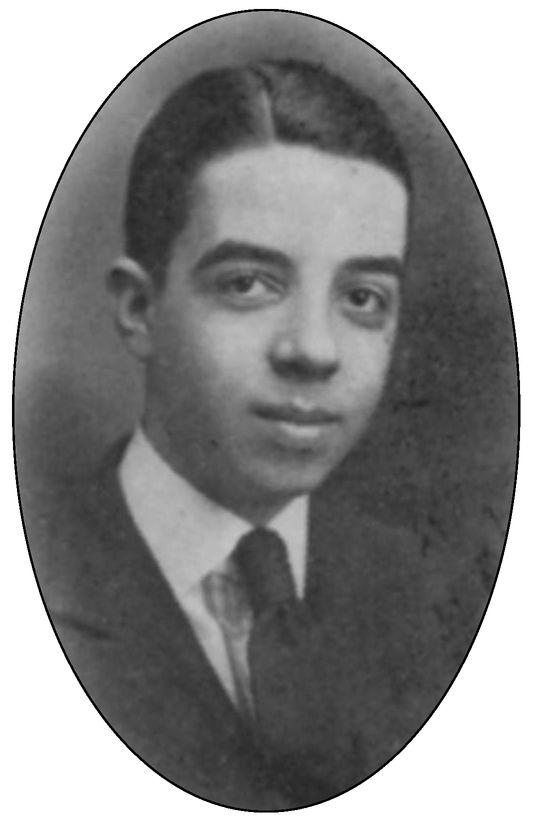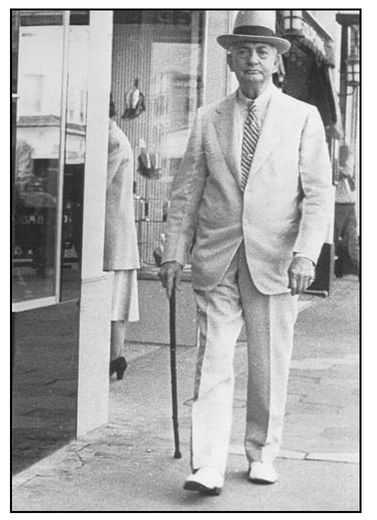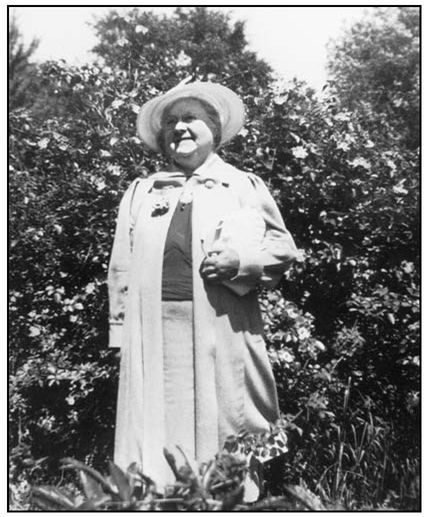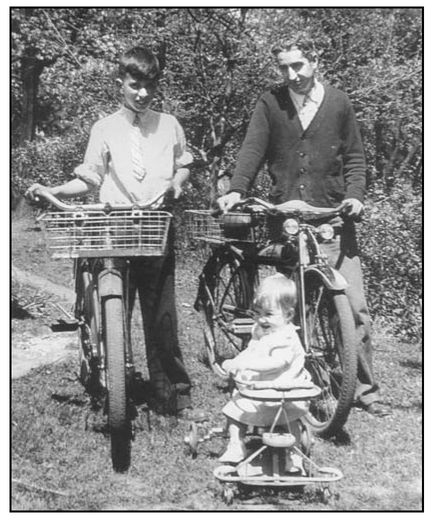Mark Griffin (3 page)
Authors: A Hundred or More Hidden Things: The Life,Films of Vincente Minnelli
Tags: #General, #Film & Video, #Performing Arts, #Motion Picture Producers and Directors, #Minnelli; Vincente, #Entertainment & Performing Arts, #United States, #Motion Picture Producers and Directors - United States, #Biography & Autobiography, #Individual Director, #Biography

In some ways, this project is a thank-you note that’s been twenty-five years in the making. So many summers ago, Vincente Minnelli’s message of hope and encouragement managed to find a restless teenager stashed away in Lewiston, Maine. And the inspirational effects of Minnelli’s movies helped an unconfident young man return to St. Dominic Regional High School with head held high. I’d like to believe that in seeking the truth about my subject and attempting to present him as a complete person, that I’m belatedly returning the favor. For as I had been told many years ago, to see yourself is to see forever.

Lester Minnelli’s yearbook photo, Willis High School, 1921. PHOTO COURTESY OF BRENT CARSON (PHOTOGRAPHER UNKNOWN)
1
Delaware Days
THERE WAS SOMETHING ABOUT THAT YEAR . . . 1903. It seemed too turn-of-the-century and antiquated, so later on, he would tell people that he was born in 1907, which sounded more modern and Jazz Age. In the best show-business tradition, shaving a few years off his age would make his talents seem all the more remarkable, coming from one “so young.”
The name on the Chicago birth certificate read “Lester Anthony Minnelli,” though that would change, too. Just as 1903 would be abandoned in favor of 1907, the name Lester would eventually give way to “Vincente,” which had a more artistic ring to it. Right from the start, reality needed to be improved upon. Painted over. “The biographer of his early years is hard put to sift fact from legend,” S. J. Perelman would write of Minnelli in 1937. Though who needed facts when you could slap a couple of coats of illusion over the unvarnished truth and create a little magic? Doing so seemed perfectly natural, as everybody in Lester Minnelli’s life was in the business of make-believe. “Vincente grew up in an atmosphere of grease paint and foot-lights,” his father once told a reporter. At least this much was true.
1
1
In either 1900 or 1902—depending on who was doing the remembering—Lester’s father, Vincent Charles (better known as V.C.), and Uncle Frank (better known as F.P.) formed what was originally called the Minnelli Brothers Mighty Dramatic Company Under Canvas. Despite the epically proportioned name, it was a modestly budgeted traveling theater company with ten actors and about twenty crew members. “We demand ability, wardrobe, appearance and sobriety,” the Minnelli Brothers announced to prospective performers. In return, actors were guaranteed respectable treatment, a long season, and “tickets from Hong Kong, if you are what we want.”
2
While it wasn’t the Ziegfeld Follies, it wasn’t peddling snake oil either.
2
While it wasn’t the Ziegfeld Follies, it wasn’t peddling snake oil either.

Lester’s father, Vincent Charles (V.C.) Minnelli in 1938. Along with his brother Frank, V.C. managed the Minnelli Brothers. Mighty Dramatic Company Under Canvas, which brought musicals and melodramas to Midwestern towns. PHOTO COURTESY OF LYNN RAMEY (PHOTOGRAPHER UNKNOWN)
Barnstorming across central and northern Ohio, Indiana, and Illinois, the Minnelli Brothers brought musicals, melodramas, and the occasional minstrel show to towns with names like Sandusky, Chillicothe, and Zanesville. They performed under canvas, usually in vacant lots, promising patrons that “the big tent will positively not leak, so a performance will be given, rain or shine.”
3
3
A Minnelli Brothers production was billed as “a good, clean attraction with so small an admission that it will never be missed.”
4
In fact, for as little as a dime, one could see the Minnellis’ “suburbanized versions” of such venerable stage melodramas as
Saintly Hypocrites and Honest Sinners
or
Mrs. Wiggs of the Cabbage Patch
(though all of the characters were renamed and some of the plot elements camouflaged so that the Minnelli Brothers could avoid paying hefty royalties to the playwrights).
4
In fact, for as little as a dime, one could see the Minnellis’ “suburbanized versions” of such venerable stage melodramas as
Saintly Hypocrites and Honest Sinners
or
Mrs. Wiggs of the Cabbage Patch
(though all of the characters were renamed and some of the plot elements camouflaged so that the Minnelli Brothers could avoid paying hefty royalties to the playwrights).
The stately V.C. would serve as the company’s musical director, accompanist, and composer of original songs.
b
Though it was Lester’s beloved Uncle Frank who handled the logistics and hit upon the idea of creating what was essentially a “portable theatre.” With their equipment in tow, the Minnelli Brothers could pitch their tent in any town, even if it didn’t offer a venue spacious enough to accommodate the large audience needed to turn a profit. Ever the industrious impresarios, the Minnelli boys came equipped with their own electric-light plant, folding chairs (for reserved seats), and bleachers (for general admission). If all that wasn’t enough, the Mighty Dramatic Company could even deliver a vivacious star who had once graced the Broadway stage.
b
Though it was Lester’s beloved Uncle Frank who handled the logistics and hit upon the idea of creating what was essentially a “portable theatre.” With their equipment in tow, the Minnelli Brothers could pitch their tent in any town, even if it didn’t offer a venue spacious enough to accommodate the large audience needed to turn a profit. Ever the industrious impresarios, the Minnelli boys came equipped with their own electric-light plant, folding chairs (for reserved seats), and bleachers (for general admission). If all that wasn’t enough, the Mighty Dramatic Company could even deliver a vivacious star who had once graced the Broadway stage.

Lester’s mother, Mina Le Beau, in 1938. In her touring days, she performed under the stage name Mina Gennell and the press dubbed her “The Dresden China Doll.” PHOTO COURTESY OF BRENT CARSON (PHOTOGRAPHER UNKNOWN)
Lester’s mother, Mina Le Beau, had adopted the stage name Mina Gennell and had won acclaim as an actress in productions in Chicago (where her family had settled).
c
While appearing on the bill of a Charles A. Loder revue, Mina met V. C. Minnelli. It was anything but love at first sight, as almost immediately, the star and her musical director clashed over her accompaniment. Eventually the smoke cleared and the leading lady found herself attracted to this ambitious, obstinate Italian American, who knew his way around a tune and how to charm everyone into doing things his way.
c
While appearing on the bill of a Charles A. Loder revue, Mina met V. C. Minnelli. It was anything but love at first sight, as almost immediately, the star and her musical director clashed over her accompaniment. Eventually the smoke cleared and the leading lady found herself attracted to this ambitious, obstinate Italian American, who knew his way around a tune and how to charm everyone into doing things his way.
In November 1894, V.C. and Mina were married in Chicago. To those who followed her career as a high-spirited soubrette, Mina seemed to be sacrificing a bright future on the Broadway stage in favor of marriage. Though she didn’t seem to mind. “Mother definitely lacked an emotional affinity for the theatre,” Vincente Minnelli would observe. “Though she was well on her way to becoming a star—acting was just a living to her.”
5
5
Despite her ambivalence to the theatrical profession, “The Dresden China Doll” (as Mina had been dubbed by the press) would appear in countless Minnelli Brothers specialties, including
A Tom Boy Girl
,
Tess of the Storm Country
, and
The Girl of the Golden West
.
6
Though legitimately talented, Mina harbored few illusions about the theater, having survived the inhumane demands of performing fifteen shows a day at one point in her career. By the time she became the leading light of her husband’s company, “The Dainty Star” had seen it all.
A Tom Boy Girl
,
Tess of the Storm Country
, and
The Girl of the Golden West
.
6
Though legitimately talented, Mina harbored few illusions about the theater, having survived the inhumane demands of performing fifteen shows a day at one point in her career. By the time she became the leading light of her husband’s company, “The Dainty Star” had seen it all.
A publicity photograph of Mina as Lady Babbie in
The Little Minister
speaks volumes.
7
The image reveals a diminutive woman with unusually large, haunting eyes. There is no attempt to “turn on” for the camera. The absence of personality is all the more surprising when one remembers that this is the grandmother of the most animated performer of all time, Liza Minnelli. In later years, Lester would remember his mother as a “simple” woman who “blossomed” on stage. Though, as Lady Babbie, Mina is decidedly unglamorous, and her slight look of peeve suggests that she might find greater fulfillment scrubbing the pantry than stealing an extra bow.
I’d rather be anywhere but here
, her expression seems to be saying.
The Little Minister
speaks volumes.
7
The image reveals a diminutive woman with unusually large, haunting eyes. There is no attempt to “turn on” for the camera. The absence of personality is all the more surprising when one remembers that this is the grandmother of the most animated performer of all time, Liza Minnelli. In later years, Lester would remember his mother as a “simple” woman who “blossomed” on stage. Though, as Lady Babbie, Mina is decidedly unglamorous, and her slight look of peeve suggests that she might find greater fulfillment scrubbing the pantry than stealing an extra bow.
I’d rather be anywhere but here
, her expression seems to be saying.
A year after their marriage, the Minnellis prepared to welcome their first child, but what should have been a joyous occasion would have a tragic outcome. “Before I was born, twin brothers had been carried off by mysterious childhood diseases endemic to the times,” Vincente Minnelli would write in his ironically titled memoir,
I Remember It Well
. “Another brother named Willie . . . died when I was an infant. Little wonder that mother was overprotective of me, her last surviving son.”
8
While it makes for a poignant story (in the best melodramatic tradition), Vincente’s version of events is incorrect.
I Remember It Well
. “Another brother named Willie . . . died when I was an infant. Little wonder that mother was overprotective of me, her last surviving son.”
8
While it makes for a poignant story (in the best melodramatic tradition), Vincente’s version of events is incorrect.
Between 1895 and mid-1900, Mina reportedly gave birth to five children, but only one survived to greet the new era. In August 1895, a set of twins was delivered: William Francis Minnelli and an unnamed sibling (referred to only as “Baby Minnelli” in interment records) who either arrived stillborn or succumbed shortly after birth. At the age of two years and five months, William would die of diphtheria in January 1898, some five years
before
Lester was born. In April 1897, one-month-old Vincent C. Minnelli died of
“cholera infantum.” Other than a scrawled number on the 1900 Federal Census report, no information has emerged about another Minnelli infant, more than likely stillborn or surviving only a few hours.
before
Lester was born. In April 1897, one-month-old Vincent C. Minnelli died of
“cholera infantum.” Other than a scrawled number on the 1900 Federal Census report, no information has emerged about another Minnelli infant, more than likely stillborn or surviving only a few hours.

Lester Minnelli’s brother, Paul (right), with his Delaware neighbors Lynn (left) and Marcia Ramey. In later years, whenever interviewers broached the subject of siblings with Hollywood’s Vincente Minnelli, elder brother Paul would vanish from the family tree. PHOTO COURTESY OF LYNN RAMEY (PHOTOGRAPHER UNKNOWN)
In later years, Vincente Minnelli would freely admit that he was “notoriously poor” at recalling names, dates, and details. Though in the case of his own siblings, the forgetfulness seems rather deliberate. For Lester was not, in fact, his mother’s “last surviving son.” There was an older brother, born in September 1899 in Chicago, who not only survived infancy but lived to the age of sixty, and his name was Paul.
After contracting meningitis as an infant, Paul Felix Minnelli would struggle with what would now be termed developmental disabilities. “Mrs. Minnelli told my mother that Paul was seven years old before he could say, ‘Mama.’ That was the first word,” recalled the Reverend Lynn Ramey, who grew up next door to the Minnellis.
9
Paul was living with his disability in an era that was less than enlightened about his condition. When he was twenty, the Minnellis’ eldest son would be certified as “feeble-minded” by state authorities.
d
9
Paul was living with his disability in an era that was less than enlightened about his condition. When he was twenty, the Minnellis’ eldest son would be certified as “feeble-minded” by state authorities.
d
In later years, whenever interviewers broached the subject of siblings with Hollywood’s Vincente Minnelli, elder brother Paul would vanish from the family tree.
e
With rare exceptions: In 1937, Alice Hughes wrote a
New York American
profile of Vincente and observed, “He makes no attempt to entice his younger brother to the big city, away from his home town, which is Delaware, Ohio.”
10
While Hughes misidentified Paul as a younger brother, it is one of the few instances where an article about Vincente Minnelli makes some reference to his otherwise unacknowledged sibling.
e
With rare exceptions: In 1937, Alice Hughes wrote a
New York American
profile of Vincente and observed, “He makes no attempt to entice his younger brother to the big city, away from his home town, which is Delaware, Ohio.”
10
While Hughes misidentified Paul as a younger brother, it is one of the few instances where an article about Vincente Minnelli makes some reference to his otherwise unacknowledged sibling.
Other books
Time to Pretend by Michele Zurlo
After Dark (The Vampire Next Door Book 2) by Titus, Rose
The Scottish Bride by Catherine Coulter
Heroes of Heartbreak Creek 02 by Where the Horses Run
Dead Even by Mariah Stewart
The Crown Jewels by Walter Jon Williams
The Only Game in the Galaxy by Paul Collins
Where the Ivy Hides by Kimber S. Dawn
Trust the Saint by Leslie Charteris
